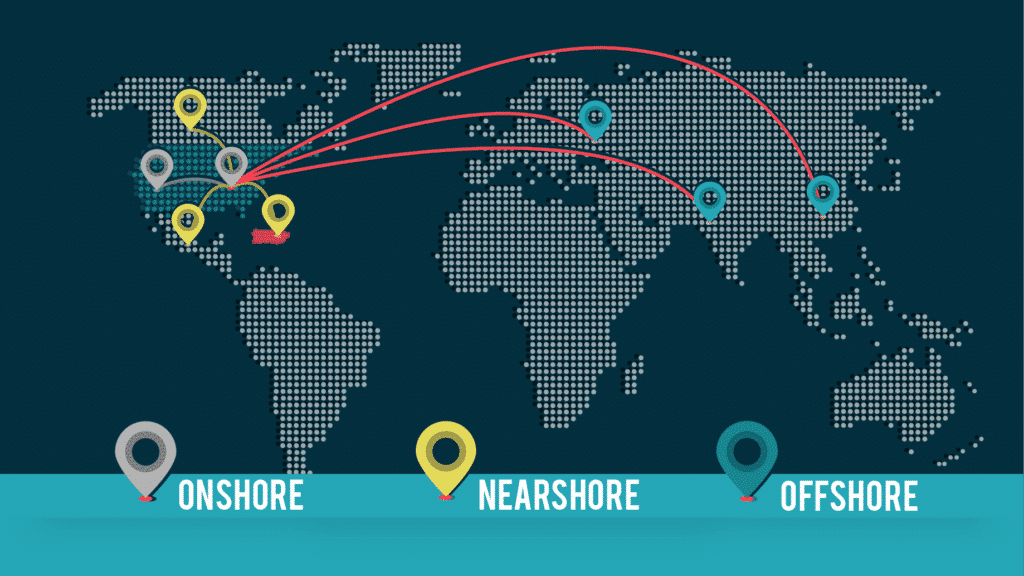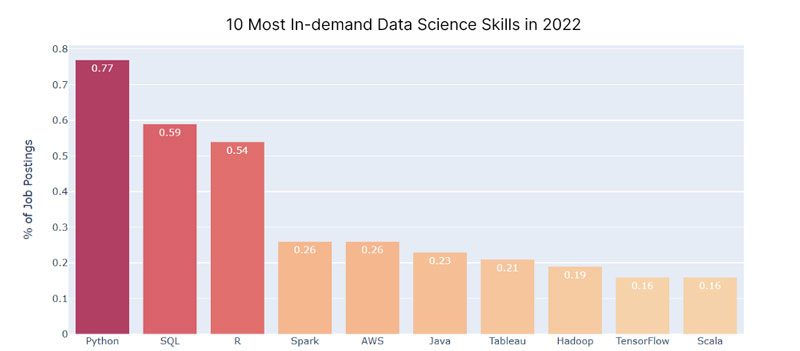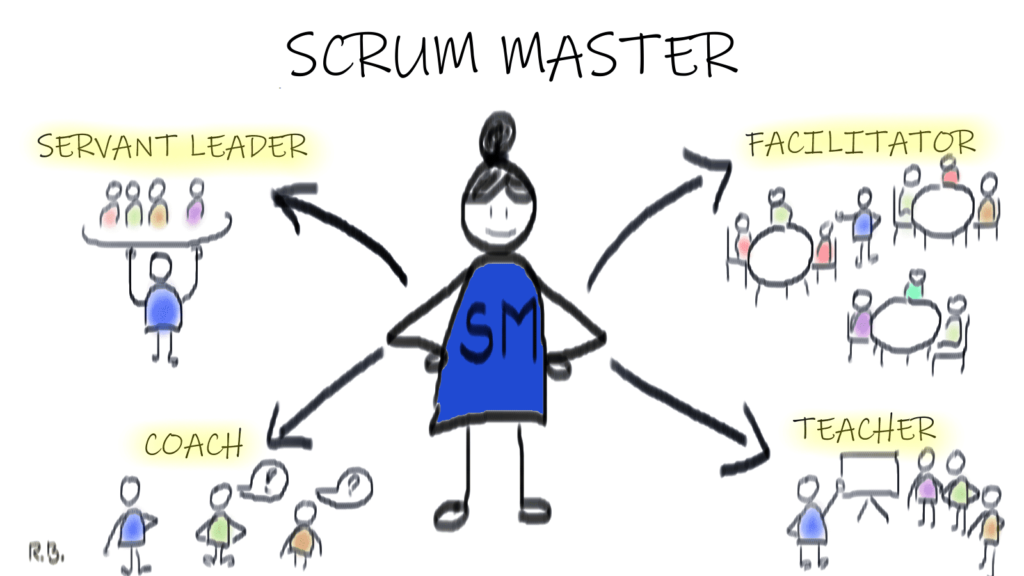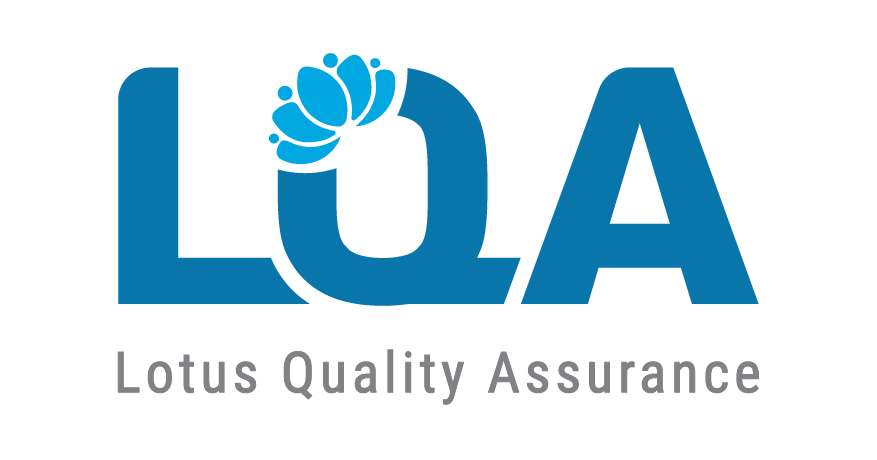In-House Software Development vs. Outsourcing: What should you choose?
The vexed question of “Should I choose In-house software development vs. Outsourcing?” must have crossed your mind and troubled you once you stepped into the digital transformation journey. To crack this puzzle, Lotus QA will walk you through the definition and the comparison between in-house and outsourcing software development so that you can find the best approach for your business.
1. Software outsourcing development
Put it simply, software outsourcing development refers to the business practice of using external service providers to handle software development. Thanks to this, businesses now have more time to focus on their core functions, which could be customer engagement, business transactions, financial development, etc.
There are three types of software outsourcing that you can choose for your business:
- Offshore software outsourcing, in which you delegate your IT functions to a team from a far-away country.
- Nearshore software outsourcing, in which you outsource to a neighboring country.
- Onshore software outsourcing, in which you outsource to a service provider in the same country.

In-house software development vs. Outsourcing – Software outsourcing
IT Outsourcing, or software outsourcing development, has been the popular choice for business leaders when they want to do digital transformation. The main reasons for this are the competitive costs, better access to the talent pool, and subject-matter expertise. With software outsourcing development, companies that don’t have any experience technology in general will receive the consultancy that they need for their digital transformation journey.
IT Outsourcing Pros and Cons that You Should Know About
2. In-house software development
In-house software development refers to the use of a homegrown increased team in your company when you want to expand and enhance your business’ technical capabilities.

In-house software development vs. Outsourcing – In-house development
With this approach, businesses need to invest many things, including time, money, human resources, etc. to form a solid team that is capable of the required skills. In turn, this approach allows your business have close-up management and communication, which can contribute greatly to the outcomes of the projects.
3. Comparison of in-house software development vs. outsourcing
The puzzle of choosing in-house software development vs. outsourcing requires you to investigate these two approaches carefully in different aspects: cost, flexibility, subject-matter expertise, project management and talent pool. The following table will compare these features to give you an overall look of in-house software development vs. outsourcing.
| Factor | Software outsourcing development | In-house software development |
| Overall cost | Lower | High |
| Subject-matter expertise | High | Adequate |
| Talent pool | Better access | Limited access |
| Flexibility | High | Low |
| Project management | Remote | Close-up |
| Communication | – Remote – Cultural gaps – Language barriers – Long waiting time |
– Direct – Same cultural background – Quick follow-up |
| Team Management | Less time spent on team management | More time spent on team management |
| Security | Higher risks | Lower risks |
3.1. Overall cost
Regarding the overall cost, software outsourcing development has a lower cost than in-house software development. This overall cost includes the cost for HR, the infrastructure cost and the operational cost.
HR costs
Software outsourcing development comes at much lower HR costs, especially when you go for offshore or nearshore outsourcing.
– In terms of labor cost, offshore and nearshore outsourcing can give you the advantage of geographical pricing, meaning that you can hire an equivalent IT worker but with a much lower budget. For example, it would cost you about $157,570 a year, including taxes, to hire a software engineer in the US. But with an outsourcing vendor, the cost drops to $50,000 a year.

In-house software development vs. Outsourcing – Recruitment cost
– In terms of recruitment cost, the average cost for an in-house team may exceed what you expect. To build a team, you will have to go through many steps, including employer branding, building training programs, investing in competitive salary and benefits, etc. It not only costs you a fortune to build an in-house team but also takes a lot of your time to do so.
On the other hand, software outsourcing development service providers can ramp up a fully functioning IT team for you within just two weeks. Any other costs of branding or training will no longer bother you.
Infrastructure cost
An in-house team will require you to lease more space, buy more equipment, etc. But with an outsourced team (either nearshore or offshore), you won’t have to worry about this.
Operational cost
Having more employees in your company means that you have to spend more on accounting and legal fees, office supplies cost, rent or lease payments, etc. All of these costs can be avoided with a software outsourcing team.
3.2. Subject-matter expertise
With software outsourcing development, you will be provided with professionals that have advanced knowledge in a specific field to help your business. The vendors for software outsourcing development also have experience working in many industries, hence you can ask them for consultancy. They will know exactly what you need, what IT workers you need, what programming languages are required, for example.

In-house software development vs. Outsourcing – SME
Of course, you can still hire SMEs for your in-house team but the hiring process will take a lot of time, effort and money.
3.3. Talent pool
The thing with software outsourcing providers is that they have a large talent pool of experts from many fields, with many technical skills that you can get access to almost immediately. There will be no long waiting time to fill in a position as with the in-house team. Especially when you request for a team ramp-up, the maximal time for this will only be 2 weeks. Hence, you can save a lot of time and start your project right when the talents are onboard.

In-house software development vs. Outsourcing – Talent pool
Especially with offshore and nearshore software outsourcing, you can get access to a resourceful talent pool from other countries, hence the chance of finding suitable candidates is higher.
On the contrary, the supply of talents for an in-house team is limited to one country only, or even just one city. This leads to a long waiting time, and of course you would want to avoid it.
3.4. Flexibility
Partnering with a nearshore IT Services provider can also allow for quick changes on your team’s assembly if the project calls for it without affecting budget, time-to-market, or performance.
With an in-house team, unless you hire a temp staff, you cannot change your team whenever you want. The contract you made between the enterprise and the talent will be long-term (at least one year), and you are legally bound to hire the staff during the agreed time.
3.5. Project management
With project management, the in-house team has a significant advantage of close-up control and direct management. In addition to this, the team will be closely monitored under the supervision of a project manager. Any issues or bugs will be reported right away and there will be immediate actions to take care of them.

In-house software development vs. Outsourcing – Project management
But with the case of IT outsourcing, the client and the team don’t work in the same premise, or even not in the same country (for the case of nearshore and offshore software outsourcing). As a result, the client cannot get a hold of everything that is going on in the project.
Maybe this information is misleading, maybe the team doesn’t actually understand the project requirements. These issues are quite common with IT Outsourcing in general. But they can be easily addressed with an in-house team.
You might wanna know: Ultimate Guide for Managing IT Outsourcing Projects
3.6. Communication
Basically, the in-house team works ‘under one roof’, and it is easier for the members to maintain strong communication, especially when a project involves several stages. For example, if you have a question, you can always ask your colleague and receive an answer straight away.
This makes the whole process of communication not only faster but also more effective. Of course, this point has become less valuable in 2022 and work-from-home scenarios. Still, the in-house team members know each other’s work schedules and are familiar with the project’s fundamentals which saves valuable time for work.

In-house software development vs. Outsourcing
For the part of outsourcing, communication has always been a big problem. Even though many tools, platforms and methods have been applied to improve it, business leaders seem to struggle. Especially, software development now follows the everchanging demands of users, so the need for communication between team members increases so that they can keep up with the new changes.
Another challenge with IT outsourcing is the differences in culture and languages. Cultural norms can make it harder to meet goals and deadlines. And language barriers can easily lead to false or misleading information, which can result in unexpected outcomes.
Plus, if you want to observe and direct your outsource center, you will have to spend more time traveling, while with an in-house team, everything is said and done right away.
3.7. Team management
Let’s imagine you’re having an in-house team. Besides work-related matters, you will have to spend more time, effort and money to provide this team benefits, resources and many other things.
But with an in-house team, you would only have to pay for the service provider an overall fee, everything else will be taken care of. With this being said, you and your business now have more time to focus on your core business operations.
3.8. Security
Security has always been one of the alarming matters with IT industry in general. While an in-house team is bound to work on-premise, which can help you avoid possible security breaches, an outsourced team is under little to no supervision as they work off-site.
When there’s a lack of supervision, there will be higher risks of security breaches. You and your business will be more prone to information cyberattacks. With a software outsourcing team, the legal agreements in terms of security measures and processes should be of the top priority so that any further risks can be avoided.
4. Choosing between in-house and software outsourcing services
Choosing between in-house vs outsourcing is a perpetual doubt since both solutions offer their strong points. But here’s the sum up:
– You choose software outsourcing development when you are bothered with:
- Tight budget
- Lack of available talent
- Tight launch deadlines
- The need for flexibility
– You choose in-house software development when you are bothered with:
- Face-to-face communication
- Complete control of your team and activities
- Immediate support
By carefully evaluating their pros and cons, you can choose the best work approach for your IT team, whether it is In-House Software Development vs. Outsourcing.

5. Get software outsourcing services with Lotus QA
Admittedly, choosing between in-house and outsourced development is challenging. However, you can seek a suitable IT outsourcing company to work it out for you.
At Lotus QA, we always try to amplify our strengths in our prices and talent pool, and mitigate communication difficulties. Our measure is to comply with the stringent communication process, together with the daily reports so that our client can know the situation with their outsourcing vendor.
Looking for a software outsourcing provider that can help you with cost reduction and talent pool? Contact our experts for more information:
- Website: https://www.lotus-qa.com/
- Tel: (+84) 24-6660-7474
- Fanpage: https://www.facebook.com/LotusQualityAssurance












































